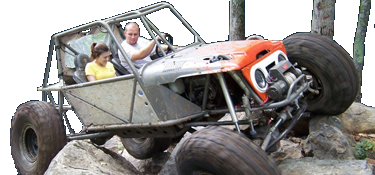Granny
One day at a time...
- Joined
- Jun 12, 2007
- Location
- Cabarrus County (Rimertown)
Hopefully, some of you guys familiar with the old stuff can set me straight on this one.....
Having spent over 50 years of my life in a machine shop I recently came across a situation that basically defies all the knowledge that I have gleaned during that time...
I was helping a good friend replace the brass bushings in a pair of 1957 M38A1 front wheel spindles. The new bushing OD measured approximately .020" larger than the bore. The Kaiser/Willys parts rep told my friend that the .020" press fit was correct and they would fit. Well... I bet my 50+ years of know-how that the bushing would buckle before it got 1/4 of the way in the bore. And... I was wrong... it went just fine... it did not buckle or crush... but, the ID did taper somewhat. It does fit the axle, and appears it will work just fine.
It is my very strong belief that .001" press would have accomplished the same thing and would not have tapered the bushing. can any one of you experienced guys/gals please provide some details and set me straight on this?
You already know you're appreciated!!!


Having spent over 50 years of my life in a machine shop I recently came across a situation that basically defies all the knowledge that I have gleaned during that time...
I was helping a good friend replace the brass bushings in a pair of 1957 M38A1 front wheel spindles. The new bushing OD measured approximately .020" larger than the bore. The Kaiser/Willys parts rep told my friend that the .020" press fit was correct and they would fit. Well... I bet my 50+ years of know-how that the bushing would buckle before it got 1/4 of the way in the bore. And... I was wrong... it went just fine... it did not buckle or crush... but, the ID did taper somewhat. It does fit the axle, and appears it will work just fine.
It is my very strong belief that .001" press would have accomplished the same thing and would not have tapered the bushing. can any one of you experienced guys/gals please provide some details and set me straight on this?
You already know you're appreciated!!!





